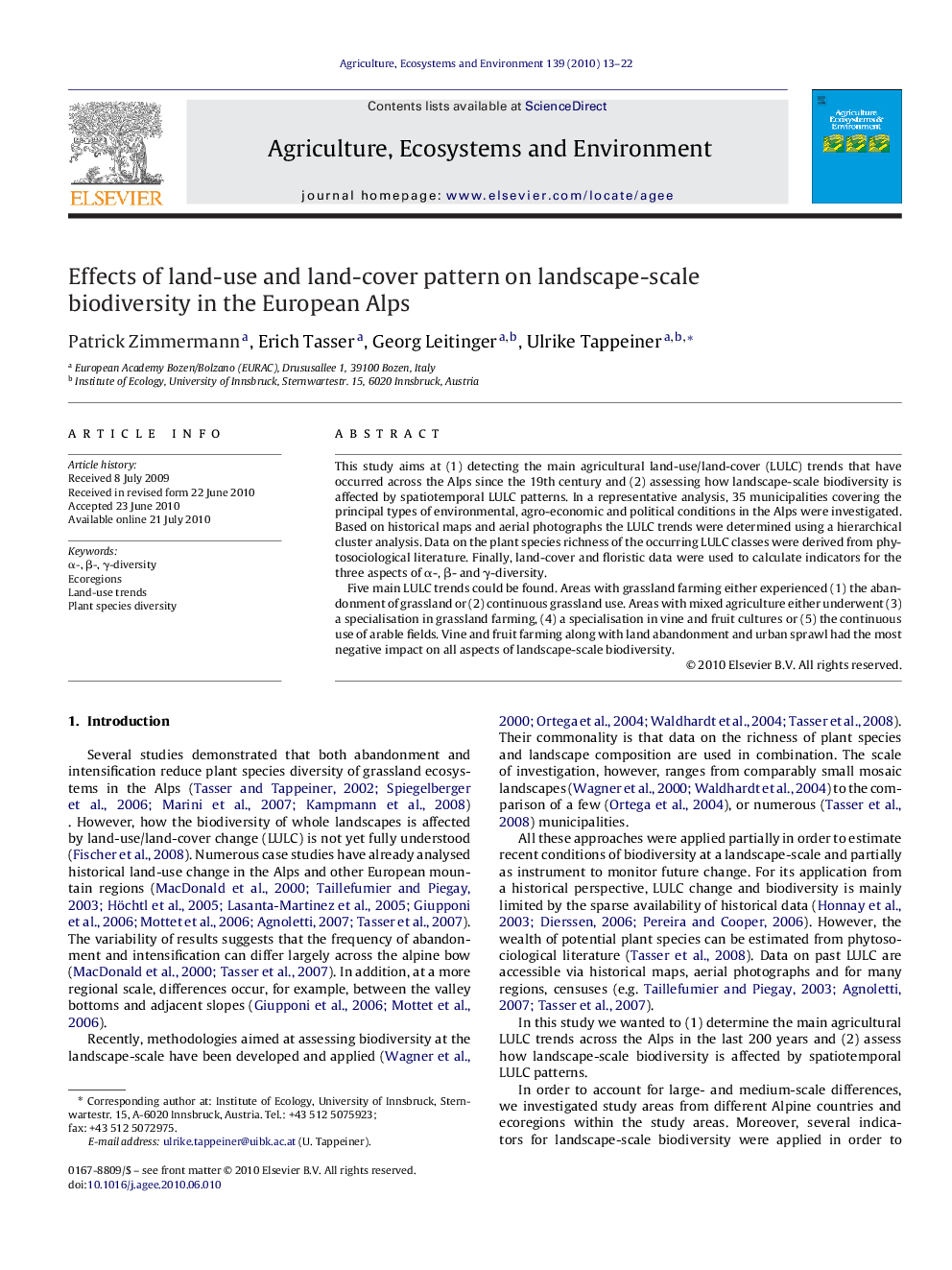| Article ID | Journal | Published Year | Pages | File Type |
|---|---|---|---|---|
| 2414888 | Agriculture, Ecosystems & Environment | 2010 | 10 Pages |
This study aims at (1) detecting the main agricultural land-use/land-cover (LULC) trends that have occurred across the Alps since the 19th century and (2) assessing how landscape-scale biodiversity is affected by spatiotemporal LULC patterns. In a representative analysis, 35 municipalities covering the principal types of environmental, agro-economic and political conditions in the Alps were investigated. Based on historical maps and aerial photographs the LULC trends were determined using a hierarchical cluster analysis. Data on the plant species richness of the occurring LULC classes were derived from phytosociological literature. Finally, land-cover and floristic data were used to calculate indicators for the three aspects of α-, β- and γ-diversity.Five main LULC trends could be found. Areas with grassland farming either experienced (1) the abandonment of grassland or (2) continuous grassland use. Areas with mixed agriculture either underwent (3) a specialisation in grassland farming, (4) a specialisation in vine and fruit cultures or (5) the continuous use of arable fields. Vine and fruit farming along with land abandonment and urban sprawl had the most negative impact on all aspects of landscape-scale biodiversity.
Graphical abstractFigure optionsDownload full-size imageDownload as PowerPoint slideResearch highlights▶ Five LULC trends could be found in the Alps. Grassland farming dominates today. ▶ Land-cover and floristic data are used to calculate indicators for α-, β- and γ-diversity. ▶ Abandonment has positive effects on biodiversity, as long as abandonment is moderate. ▶ Vine and fruit farming and urban sprawl had the most negative impact on biodiversity.
